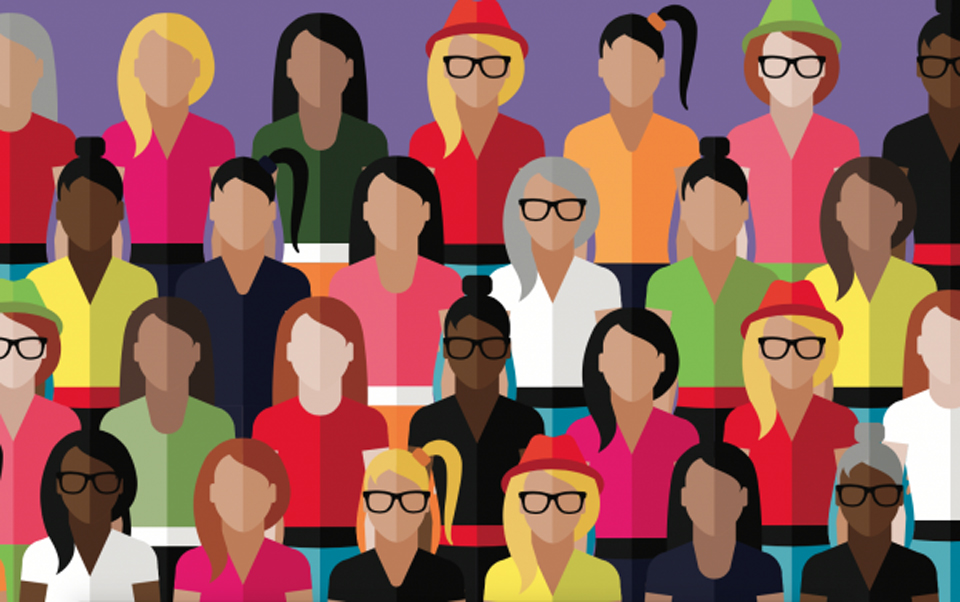Table of Contents
- Poverty
- Immigration Experience
- Cultural Factors
- Data Limitations and Racial/Ethnic Misidentification
- Rates of Violence and Trauma
- Stigma
- "Girl Next Door" Stereotypes
Race and gender intersect with many other factors in the lives of women living with HIV. Below are just a few examples of factors that affect women with HIV in different racial groups or lead them to be more vulnerable to acquiring HIV. For more in-depth information and examples of how race and gender relate to HIV, see our fact sheet Why Race Matters: Women and HIV, as well as our 2016 community education webinar on this topic.
Poverty
- According to 2020 US census data, 20% of African Americans and 17% of Latinx people are living in poverty, compared to 8% of whites; in 2019, 20% of American Indians/Alaska Natives lived in poverty
- Due in part to histories of racist housing policies, African Americans and Latinx people are far more likely than whites to live in concentrated poverty (entire neighborhoods/areas cut off from easy access to resources such as health care or high-quality schools)
- American Indian reservations are also sites of high concentrations of poverty
- Poor whites are much more likely to be spread out to more economically diverse neighborhoods, which increases their access to opportunity
- US Centers for Disease Control and Prevention (CDC) data show HIV rates are highest in areas in which 18% or more of the population live in poverty. Figures do not differ much by race, showing the extent to which poverty matters when it comes to HIV.
Immigration Experience
- The experiences of undocumented people, including Latinx folks and Asian immigrants, may lead them to fear being tested for HIV or disclosing their HIV status
- Immigration status and migration patterns also affect access to health care
- Lack of HIV education and marketing materials in a language that a person speaks or reads is a barrier to HIV awareness
- Lack of healthcare providers who speak immigrants’ languages makes it difficult to get appropriate care or discuss treatment options
Cultural Factors
- Among American Indians/Alaskan Natives, there are over 560 federally recognized tribes whose members speak over 170 languages and have their own beliefs and practices, which makes it harder to develop culturally appropriate HIV prevention programs for these groups
- In more traditional Asian and Latinx communities, gender roles and cultural norms (i.e., "machismo," which stresses that Latino men be very masculine, and "marianismo," which demands Latinas be "pure") may add to prevention challenges
- Some Asians/Pacific Islanders may avoid HIV care or prevention services to "save face" (avoid potential humiliation – a core value in many Asian cultures) or for fear of bringing shame to their families
- Religious beliefs may also affect whether sex and HIV are discussed at all. If contraception is considered morally wrong, condoms may not be discussed.
Data Limitations and Racial/Ethnic Misidentification
- Incorrectly identifying a person’s race/ethnicity can lead to underestimation of HIV cases. This may happen more frequently with Asians and Pacific Islanders, so the true rate of HIV in this group may be unknown
- Racial misidentification of American Indians/Alaskan Natives may also lead to undercounting of this population in HIV surveillance
- All these issues can lead to targeted services being underfunded in these communities
- Transgender individuals in all racial groups face the challenge of data limitations and misidentification on the basis of gender identity
Rates of Violence and Trauma
- The body of research on women living with HIV and trauma or violence continues to grow. It shows that trauma and violence impact women living with HIV to a greater extent than women in the general population. This is true both before and after a woman is diagnosed with HIV.
- American Indian/Alaskan Native women experience sexual and intimate partner violence (IPV) at a higher rate than any other racial group of women in the US
- The National Congress of American Indians reports that in 2016, more than half of American Indian/Alaska Native women reported having experienced intimate partner violence. The US CDC reports that about one in four women in the general population have experienced some form of IPV.
- The rate of post-traumatic stress disorder (PTSD) among Native women is also very high
- These harms against Native women are underreported, and not well documented
Stigma
- Stigma is a factor in increasing vulnerability of all racial groups
- Stigmas are intersectional; different types of stigma (based on gender identity, sexual expression, class, race) can make one another worse and fuel HIV-related stigma
"Girl Next Door" Stereotypes
- There is very little written specifically about the cultural factors that can leave white women vulnerable to HIV
- Many white women have reported that not "looking like" they were at risk for HIV ("I’m the girl next door," says one educator who is a white woman living with HIV) may have led to them not being offered HIV testing for years, even if they were connected to sexual health care
- This is one reason why it is in white women’s interest to oppose racism: It is bad for their health, too. Racial privilege may lead white women to get implied messages from society that they are "normal," "good," and "clean" compared to women of color. These beliefs are a barrier to white women being tested for a health condition that is associated with women of color -- even though white women acquire HIV in the same ways that women of color do.
- When women with privilege challenge the racism that portrays having HIV as different from what "regular women" experience – in part because rates are so much higher among Black and Brown women – then we fight stigma at its roots


